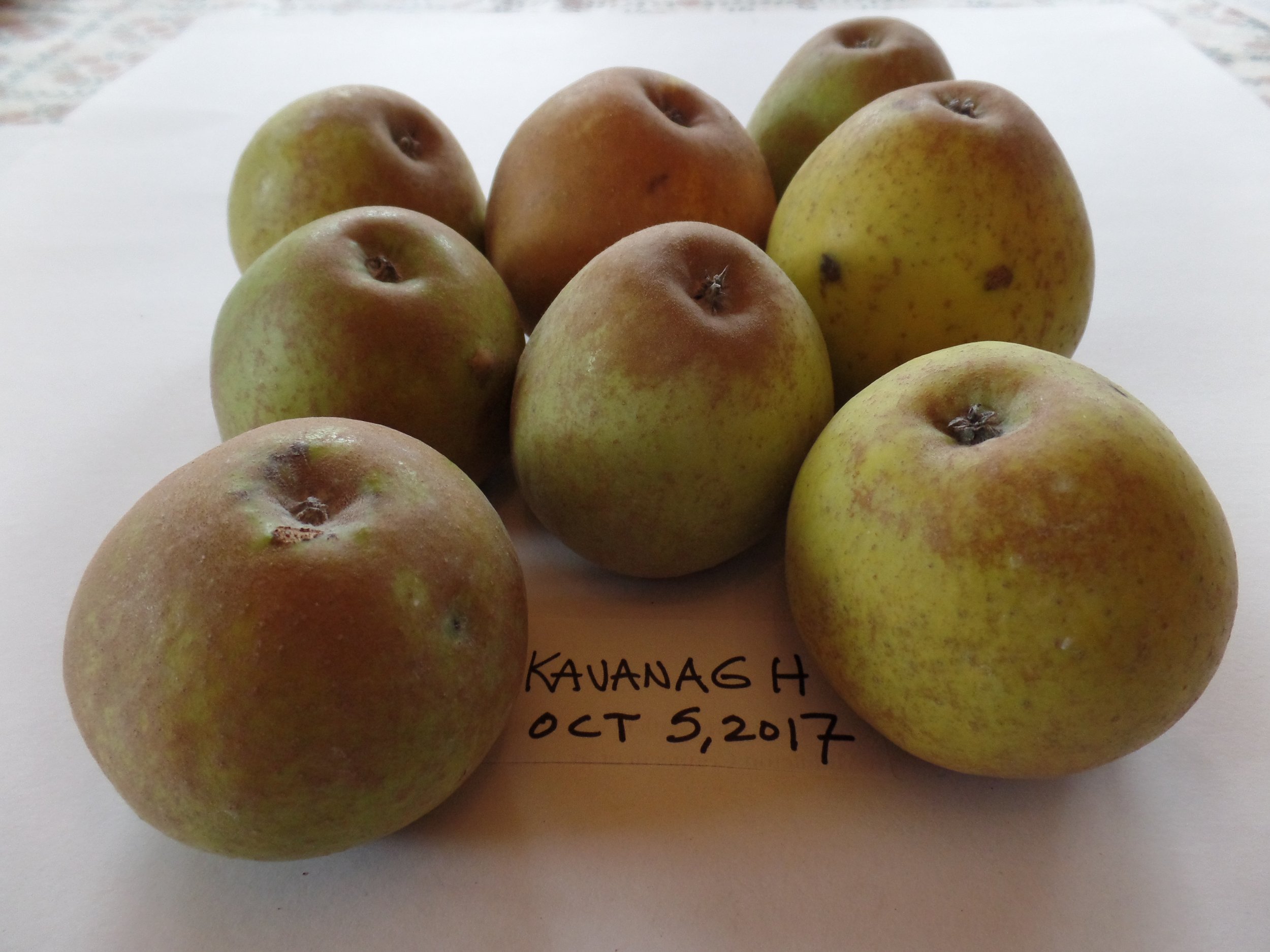Kavanagh
This unusually-shaped, large, russet cooking apple is one of the dozens of historic Maine varieties with a vague genesis. We do know it got its name from James Kavanagh (1756-1828), shipbuilder, sawmill owner and entrepreneur extraordinaire who grew up poor in Ireland and settled in Damariscotta in the early 1790’s where he became a very rich man. He may have started the first Kavanagh tree from seed he brought with him in his pocket, or he may have brought it over from Ireland as a small tree in a tub on the deck one of his fleet of ships. His life is a true rags to riches story. His beautiful mansion at the base of Damariscotta Lake is undergoing extensive renovation in 2023.
Kavanagh was popular ages ago along the Maine coastal peninsulas, anywhere a schooner could land. It was thought to have disappeared forever, but it was rediscovered in 1978 by George Dow in Newcastle. George later introduced it to John. Since then we’ve found about dozen more ancient trees, most in mid-coast Knox and Lincoln counties. Kavanagh is now preserved at the Maine Heritage Orchard in Unity.
The apple is sometimes called Cathead because of its distinctive shape - a large stem end tapering to a small blossom end that is typical of some Irish varieties and most cats. The skin is a mixture of russet and a deep, rich, lime green. The dry, low-acid flesh makes it excellent for cooking, drying and even frying. We love it cored, sliced cross-ways and fried in bacon fat. Yum! The apples cook quickly down into a into a frothy, yellow sauce that is tart, tasty, thick and incredibly creamy. Surprisingly the skin dissolves as it cooks. The slightly yellow flesh is mild, moderately crisp, moderately tart and subtle.

